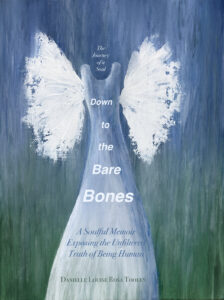Book Excerpt 3
Diagnosis and Prognosis
Diagnosis 1 – Meningococcal Meningitis
Cause: The bacterium Neisseria Meningitidis. About 1 in 10 people carry this bacterium in the back of their nose and throat with no signs or symptoms of the disease. These individuals are known as carriers. However, sometimes the bacteria invade the body and cause certain illnesses, known as meningococcal diseases.
| Symptoms | Treatment |
| · General poor feeling · Sudden high fever · Severe, persistent headache · Neck stiffness · Nausea or vomiting · Discomfort to bright lights · Drowsiness or difficulty awakening · Lethargy or excessive sleepiness · Shivering or cold hands and feet · Joint pain · Confusion or other mental changes · Seizures · Petechiae – sign of septicemia (blood poisoning) and is a medical emergency. |
· Act quickly · Do not wait · Steroids · Supportive treatments for other symptoms · Breathing support · Wound care |
Prognosis: Fatal if not treated within 24 hours. Even with treatment, up to 15% of patients will die from complications, and 19% of the patients that survive will have long-term disabilities such as loss of limb, deafness, blindness, nervous system problems and/or brain damage.
Diagnosis 2 – Fulminant Meningococcemia
Cause: The bacterium Neisseria Meningitidis disseminated into the bloodstream.
| Symptoms | Treatment |
| · Fever · Chills · Petechiae · Purpura · Internal bleeding · Blood clots · Low blood pressure |
· Act quickly · Antibiotics · Supportive treatments for other symptoms |
Prognosis: Fatal if not treated within 2-6 hours. Can be one of the most dramatic and rapidly fatal of all infectious diseases. Damaged organs and leaking blood vessels cause large areas of skin, muscle, and internal organs to die from lack of oxygen and blood. Up to 20% of patients will die from an acute infection. A significate percentage of survivors will have tissue damage that requires surgical treatment (skin grafts and/or partial or full amputations).
Diagnosis 3 – Waterhouse-Friderichsen Syndrome
Cause: Caused by severe infection with meningococcus bacteria, or from infections from several other severe bacterial infections. It is the failure of the adrenal glands to function normally which is a result of bleeding into the gland.
| Symptoms | Treatment |
| · Sudden onset of symptoms · Fever and chills · Joint and muscle pain · Headache · Vomiting · Petichiae when septicemia is involved · Septic shock · Dizziness and weakness · Very low blood pressure · Very fast heart rate · Confusion or coma · Disseminated intravascular coagulation (small blood clots cutting off blood supply to organs) |
· Act quickly · Antibiotics · Steroids · Supportive treatments for other symptoms |
Prognosis: Fatal if not treated within 24 hours.

